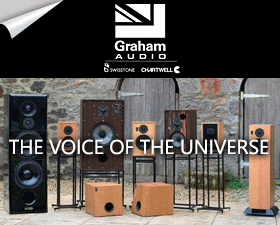Hello, I've got a pair of Sound Lab Ultimate 1 electrostats. These have the toroid and hot rod upgrades. The first power cords I installed that
produced a major audible improvement were the High Fidelity Cable Helix Signature power cords. Quieter background, increased detail and
separation. But only modest improvement in bass response and dynamics. When I inquired, mfg said the cables needed 400-500 hours to fully
break in. At about 75 hours, I threw in the towel. I then purchased a pair of ESP Reference power cords. Though these were much less expensive
than the HFC power cords, they produced much better bass and dynamics. I might add, parenthetically, that these electrostats are too large for my listening room (13.5 x 19 x 14 ft H). Hope this helps. Phil
Can you offer any physics that support your findings? I ask this only because I did study physics and I truly can't see how there can be any benefit of one power cable over another, provided RFI is avoided.
Think about it - the cable carries AC from a distant power station and a number of sub-stations that eventually end up in your home at 110 or 230 volts. After these many miles of transmission along bog-standard copper cables to your meter and fuse box, the voltage continues through your house wiring to the socket behind your hi-fi rack - again normally pretty basic unscreened twin and earth copper cable.
From there, are you really saying that the last meter or two between the wall socket and the back of your amp or speakers should be any different from the many miles of cable that feeds the socket? Why should it?
Certainly there's a case for these 2 meters to be screened but even then, only if your home is full of RFI-inducing devices such as fridges. So let’s address that by using a cable such as Belden 19364 that has a screen to keep any RFI at bay and a drain. This costs about £9 per meter and cannot be improved upon, even by solid silver or gold cables as 110 or 230 volts is simply that - the power requirement demanded by the amp or speaker.
If your amp or speaker's power supply uses a transformer and capacitors to convert this AC to a smooth DC supply to feed the transistors or valves, what more can you ask of the power supply? Surely Physics simply denies the assertion that the last couple of meters of the power supply makes any difference whatsoever.
Correct me if Rules of Physics have changed since I studied them. I accept that interconnests and speaker cables that carry the audio signal are a different matter, but not the simple power supply cables that feed a transformer and have no direct contact with the signal itself.
If the dealer tries to sell you megabucks power cables, then he should be viewed with deep suspicion!


















